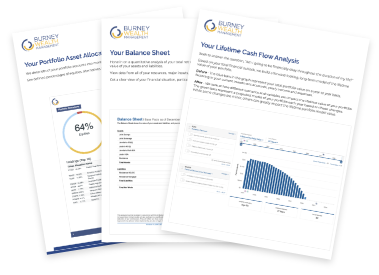What is the Best 529 Plan? Consider These 5 Key Factors

As a grandparent or parent, making informed decisions about your child or grandchild's education is crucial. One powerful tool that can help you save for their future is a 529 plan.
529 plans offer a range of benefits, and in this article, we will explore five key factors to consider when evaluating these plans. Being mindful of these factors will allow you to make an informed decision that aligns with your financial goals and supports the educational aspirations of your loved ones.
1. Cost and Fees: Minimizing Expenses, Maximizing Growth
One of the key factors to consider when evaluating a 529 plan is the cost and fees associated. While it may be tempting to zero in on hypothetical investment returns, the impact of expenses cannot be overlooked. High management fees and expenses can significantly eat into the potential of your investment’s growth over time.
When assessing the cost of a 529 plan, it's important to understand the management fees charged by the plan provider. These fees cover the administrative and operational expenses involved in managing the plan. They are typically expressed as an annual percentage of assets under management. It is best practice to compare the management fees of different plans to ensure you are getting the most cost-effective option.
For the same reason, relating to cost-efficiency, expense ratios are meaningful. Expense ratios reflect the cost of owning a specific investment, such as mutual funds or exchange-traded funds (ETFs). Lower expense ratios translate to more of your investment dollars being allocated towards potential investment growth rather than being consumed by fees.
Even seemingly small differences in fees can compound over time and materially affect the overall value of your investment, which is why careful consideration of the impact of said fees and expenses is so important. By selecting a plan with lower fees and expense ratios, you can effectively minimize expenses, while maximizing the appreciation potential of your contributions.
2. Investment Options: Aligning Risk Tolerance and Time Horizon
Another factor of emphasis in the selection process of a 529 plan is what investment options are available within the plan. These can range anywhere from conservative to aggressive. Eventual choice of the right mix for you will be influenced by a combination of risk tolerance and time horizon.
Start by considering your comfort level with fluctuations in the current market value of your investment. If you have a longer period of time until the funds will be needed, such as when the beneficiary is young, you may be more willing and able to welcome higher levels of risk in pursuit of potentially higher returns. On the other hand, if the beneficiary is nearing the start of their education and will need to pull funds from the account as a result, a more conservative approach may be more appropriate to preserve readily available capital.
An additional evaluation technique is to research the performance history of the investment options within the 529 plan. Past performance can provide insights into how these options have fared over time. A good track record is typically a positive sign for a plan you can trust, but that’s not to say it’s a guarantee; past performance does not guarantee future results. Look for consistent performance and consider how the investments have weathered different market conditions.
The next question to ask should be: “can I effectively diversify my investments within this account?” The ability to diversify must be taken into account. A well-diversified portfolio strategically spreads investments across different asset classes, such as stocks, bonds, and cash equivalents. Diversification helps reduce the impact of volatility and potential losses by not putting all your eggs in one basket. Assess the diversification capacity offered by the investment options within the plan to ensure they align with your investment objectives.
3. State Tax Benefits: Maximizing Savings Opportunities
People often inquire whether it is beneficial to use your home state’s 529 plan or another state’s. Depending on the state, there are potential state tax benefits offered by your home state's plan. Taking advantage of these benefits can serve as an added bonus on top of moving closer to accomplishing your savings goals. Let's hone in on this to make it actionable:
Research your home state's plan. Start by exploring the 529 plan options available in your state. Each state typically offers its own plan, and some may provide additional tax advantages for residents, such as deductions or tax credits for contributions up to a certain level. Understanding and tactically leveraging these benefits can significantly impact your overall savings.
One caveat to this comes into play should you change your state of residence. You should keep in mind that if you change your state of residence, the tax benefits associated with your original state's plan may no longer apply. If you plan to relocate or have beneficiaries in different states, it's important to do your due diligence in researching and assessing the potential impact this move may have on the tax advantages provided by the specific plan you choose.
4. Usage: Plan Features that Suit Your Needs
Certain 529 plans have differing usage features. Reading into the flexibility and accessibility of your plan options is highly recommended, as the utilization rules can affect the factors discussed in this article.
Some plans may limit the usage to qualified education expenses, such as tuition, fees, books, and room and board. Others may offer more flexibility, allowing funds to be used for a broader range of educational expenses, including vocational schools and certain K-12 expenses. Assess the plan's rules to ensure they align with your intended usage of the funds.
Consider the portability of funds between beneficiaries. Flexibility in transferring funds between beneficiaries can be valuable if your original beneficiary doesn't utilize all the funds or if you have multiple children or grandchildren. Some plans allow you to change the beneficiary to another family member without incurring penalties. This flexibility ensures that the funds can still be used for educational purposes even if the original beneficiary's plans change.
Awareness of withdrawal options and potential penalties is essential when deciding on a plan as well. Whether it’s periodic withdrawals or lump sum withdrawals, plans do vary. Penalties or tax implications associated with early or non-qualified withdrawals are another area that is important to understand, as these policies affect the accessibility of funds and ability to withdraw funds if need be.
By being mindful of a 529 plan’s rules and restrictions, you can select a plan that suits your needs and provides the necessary adaptability for any changing circumstances that may come into play.
5. Reputation and Track Record: Trusting the Plan Provider
As touched on prior, the reputation and track record of the plan provider should play a large part in the ultimate decision of which plan to go with. Trusting the entity that manages and oversees the plan is essential for the long-term success of your investment.
What is meant by “reputation” and “track record”? This references its history of service and operation, investment background and expertise, experience in managing educational savings plans, and past evidence of financial stability. A well-established provider with a solid history instills confidence that they have been through and proven to hold strong through periods of volatility.
Ratings and reviews from reputable sources can also be useful resources. Seek out commentary like this in places like financial publications or independent research firms. These evaluations can provide insights into the plan provider's performance, customer satisfaction, and overall reputation.
Customer service and support can be overlooked as well. Your sentiment with a plan provider can be entirely determined by having one or multiple accessible and knowledgeable customer service representatives who can assist you with any questions or concerns. A helpful customer service team can make a significant difference in addressing your needs and ensuring a smooth experience with the plan.
What now?
Choosing the right 529 plan for your child or grandchild requires careful consideration. All of the factors mentioned deserve emphasis and it’s imperative to take ample time to look into all of them to make an educated decision that aligns with your needs.
While this article provides guidance, it's important to personalize your decision-making process based on your unique circumstances. Consulting with a financial advisor who specializes in education planning will lend valuable insights and work alongside you in navigating the complexities of 529 plans.
The Burney Company is an SEC-registered investment adviser. Burney Wealth Management is a division of the Burney Company. Registration with the SEC or any state securities authority does not imply that Burney Company or any of its principals or employees possesses a particular level of skill or training in the investment advisory business or any other business. Burney Company does not provide legal, tax, or accounting advice, but offers it through third parties. Before making any financial decisions, clients should consult their legal and/or tax advisors.





